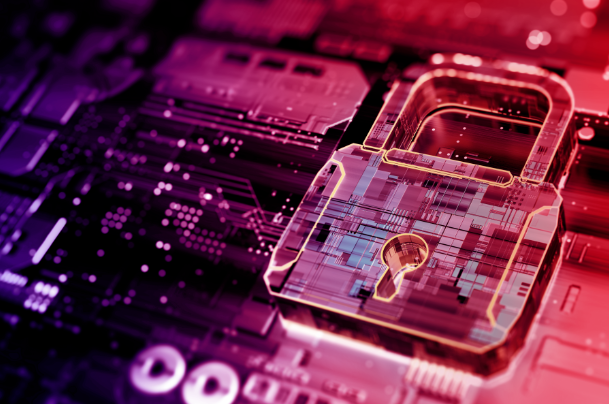keysight, Releases Industry Trend Forecast to 2023 (II)
6G-Colin Bauer, Project Manager, Wireless Communications Market, Yestech
1. The new face of the Olympics: the metaverse
When the 2028 Summer Olympics arrive, 6G will be on the global stage. As a global Olympic partner, Samsung expects to begin commercial deployment of 6G in 2028, which will be a key highlight for spectators enjoying the Olympics. For example, viewers will see two opening ceremonies, one of which will be in the metaverse.
The metaverse will also bring a new user experience that will enable fans to attend some of the Olympic events. We'll see some special sports, such as the possibility of seeing actual e-sports competitions held in tandem with the 6G Meta-Universe Olympics and at least one medal awarded in the Meta-Universe. There will likely be a surge in 6G use cases in 2028 as major brands take their cues from the Olympics.
2. The arrival of 6G opens the door for new mobile network operators in the United States
Tier 1 mobile network operators in the U.S. have a relatively stable market, but that trend will change with the arrival of 6G. Similar to Google Fiber's entry into the ISP space, I think we will see Amazon, Microsoft, or other tech giants potentially seize the 6G windfall and become the new Tier 1 mobile network operators.
3. Post 95s and younger are the main targets for 6G
Ever used a BlackBerry? If so, then 6G is not for you. It is built and set up primarily for the current 25 and under age group. They are the digital natives, keen to participate in virtual groups or share everything online. In 2023 and beyond, there will be more discussion around the consumer preferences of these young people in the 6G era.
4. 6G will create a more geographically inclusive world - but it will come at a cost
6G's greater connectivity will benefit industries in rural and remote areas (such as railroads, offshore drilling or mining). In addition, the ultra-low latency of the network will further accelerate the realization of high-speed finance. But all the advantages of 6G also come at a cost, as it will be far more expensive than previous generations of technology. With this in mind, there may be differences in the popularity of 6G.
5. Spectrum issues constrain further network innovation
6G is coming, and while there is still much work to be done to realize its potential, we have enough bandwidth to make it happen. However, there is not much spectrum left available, and this will eventually become an obstacle to future technology development. As a result, it is expected that by the 1930s we will have to focus on solving the spectrum puzzle in order to allow future network innovations to continue to flourish.
6G in 2023 - 6G Project Manager at Yestech (Roger Nichols)
So for 6G (and partly 5G) - what will happen in 2023.
-The big shows will get even better. 2025 Osaka Expo serves as a showcase opportunity for 6G, and the Japanese government will make it even more interesting. At the 2028 Los Angeles Olympics, one of the major US carriers may be granted access to 6G radar spectrum.
-Federal Communications Commission (FCC) discussions on 6G (and 5G) spectrum will intensify - whether using the NPRM or NOI system, conflicts over the 12 GHz band will intensify as the industry debates the way spectrum will be managed over the next decade.
-5G - Current criticism of 5G's failure to meet expectations is expected to begin to moderate as deployments of Rel-16 increase and Rel-17 capabilities are put into early deployment. These developments will lead to the full realization of the original 5G vision.
-As part of the International Telecommunication Union's Radiocommunication Sector Working Group 5D (ITU-R WP-5D) 6G vision work, the International Telecommunication Union (ITU) will release wireless performance metrics for 6G. This will lay the foundation for the industry to set targets that must be met in order to comply with the IMT-2030 standard.
-5G FR2/mmWave will increase, but at a slower pace because: more improvements are still needed in the relevant standards and because of the cost of deployment.

What will not happen immediately.
-Work on 6G standards will still be in its initial stages even by 2024, which is not bad. Because 6G is still being studied, there is still a lot of work to be done on 5G standards before the first research projects on 6G can begin.
-The ultimate use case for 6G is also still in early discussions.
-China will not be allocated FR2 spectrum until at least 2024.
The Future of Electric Vehicles - Thomas Goetzl, Vice President and General Manager, Automotive and Energy Solutions, Yestech
1. Electric vehicles drive more converged and smarter energy consumption
In the next decade, electric vehicles (EVs) will become a reservoir of electricity for users, whether on the road or at home. Smart apps will determine how much power is needed for the next day's drive based on a calendar, so owners can use the remaining power for household needs. By 2025, electricity providers are expected to realize this possibility and find that EVs already pose a clear threat to the current static grid infrastructure.
2. Electric vehicles help the construction industry go green
To date, electric vehicles have been associated with consumers concerned about climate change; however, by 2025, electric vehicles will be entering some hard-to-think-of industries. For example, the construction industry could also benefit from electric vehicles. The excess power from electric vehicles could power heavy machinery that, until now, had bulky generators or lots of cables to work.

3. The Automotive Revolution
With rapid innovation in electric vehicles (EVs) and self-driving vehicles (AVs), the automotive revolution is beginning to reshape our world. However, advances in mass charging, charging infrastructure and battery technology for EVs still face challenges in order to increase range and save costs. For example.
-Unless a range of 300 miles or more can be achieved on a single charge and fast charging can be done in 10 minutes or less, range anxiety will persist. Until the problem is solved, commercial vehicles will remain predominantly fuel-efficient.
-Electric vehicles will require a unified standard across the ecosystem to become mainstream globally.
-Battery innovations, such as silicon anodes and solid-state batteries, will be needed to clear the hurdles to widespread electric vehicles.
Quantum Computing - Director of Quantum Engineering Solutions, Yestech (Dr. Eric Holland)
1. Quantum technologies are poised to accelerate and simplify the design process
In the aerospace industry, it is not uncommon for it to take 25 years to invent a new polymer that will make an aircraft more fuel-efficient and heat-resistant. Quantum technology can dramatically accelerate the design of this and other materials science. Instead of employees hitching their entire careers to a single design cycle, the process could be completed in just a few years.
2. Quantum technology has great potential to combat climate change
Once quantum technology demonstrates its benefits, it will increasingly be used to help combat climate change. For example, through sophisticated modeling and forecasting to improve decision-making and ensure compliance with emissions standards.
3. Reducing the impact of weather events such as hurricanes
By the end of the next decade, quantum technology will enable meteorologists to better predict the trajectory of weather events such as hurricanes and winter storms. Communities can eliminate guesswork, plan more scientifically, and make accurate decisions about whether they need to force evacuations or provide shelter in place. As a result, the loss of life caused by hurricanes or other natural disasters will be significantly reduced.
4. Quantum navigation will illuminate remote areas
Quantum technology can facilitate navigation in remote areas with minimal satellite coverage, but there are currently barriers in terms of cost. This will begin to change as quantum technology becomes more common and affordable. I believe that rescue vehicles will be equipped with quantum sensors within the next decade, with home cars to follow.

5. Europe: Quantum technology catches up with the US
Currently, the United States leads the quantum computing industry, but by the end of this decade, Europe will be at the same level. Ongoing privacy regulations are a major factor driving the technology's growth in Europe, and having quantum computing capabilities in the region could make compliance with these regulations relatively easy. In addition, quantum companies in Europe have witnessed sizeable venture capital investments and a steady stream of talent from numerous universities throughout the continent, which provides for the discovery of new quantum opportunities and the popularization of additional use cases. As a result, the U.S. quantum industry will feel increasing pressure to maintain its competitive advantage.
6. Solidifying the foundation for a new era of quantum technology
After decades of hype around quantum computing and quantum systems, the industry is beginning to realize the enormous potential of quantum technology - it will lead to countless new opportunities for creativity in areas such as cybersecurity, materials creation, financial analysis, and military receivers.
Some visionary companies will begin to invest in quantum technology and develop quantum talent in the next generation of employees by partnering with universities, running hackathons and other programs. This will drive DEI (diversity, equity and inclusion) initiatives that will produce much-needed skilled people and enhance employee diversity in the tech industry. Recent studies show that 74% of companies believe they will fall behind if they do not adopt quantum technology. As a result, many companies are shifting their mindset and realizing that quantum technology is a technology not to be missed. They are beginning to use it aggressively to address key challenges in areas such as financial resources and operations, and hope to develop enterprise-level applications that truly employ quantum technology by 2026 (or even sooner).
Security - Vice President of Security Solutions, Yestech (Scott Register)
1. The aggressiveness of artificial intelligence
Deepfake technology will soon take on a new twist beyond the ability to fake political chaos, web chats and doctored videos. For years, security experts have warned about the potential for social engineering attacks with Deepfake. The technology is now mature enough that by 2023 we are likely to see it successfully exploited by hackers. Forged images, audio and very realistic conversations will proliferate, all designed to trick recipients into sharing personal data or other sensitive information. This deep forgery threat is not just for consumers; we are likely to see miscreants attempting to attack CEOs of Fortune 100 companies for extortion or defamation.
2. Hackers in the home
With the growing popularity of IoT devices, hackers will no longer be anonymous or hidden, but will likely pose a tangible threat right in our smart homes. It is expected that threat perpetrators may gain access to webcams, microphones, smart TVs and other connected devices to demand information about our money transfers or bank accounts. With this in mind, IoT manufacturers will have to develop their responses to IoT ransom.

3. the end game for hackers: physical damage
Traditionally hackers may still abide by their "rules of the road - limit physical damage", but those days are history. 2023 will likely see more highly targeted OT attacks that disable or disrupt systems, with the ultimate goal of to harm people. For example, ransomware soft-ban attacks against medical life-saving devices will become a daily occurrence.
The Evolving Cyber Insurance Industry
In the past, cyber insurers have preferred a yes-or-no approach to coverage, depending on the maturity of the company and the type of threat it faces. But by 2023, things may change, with insurers declining to underwrite more companies and introducing risk-based pricing systems to address the dynamically changing threat landscape. I believe we will see more exemptions that deny coverage for ransomware and other specific types of attacks.
Leveraging Digital Twins and Artificial Intelligence for Product Development - Jonathon Wright, Chief Technology Outreach Ambassador, Yestech
Quantum computing, digital twins, artificial intelligence, electric and self-driving cars, and 5G and 6G are rapidly advancing technologies that bring endless inspiration and innovation to a wide range of industries.
Product development with digital twins and artificial intelligence (AI): Digital twins and AI are disruptive technologies that promise to change the world dramatically. While we are not new to these technologies, there are real-world use cases that demonstrate their disruptive nature, such as.
-Digital twins can take on the role of virtual caregivers/virtual companions to assist older adults to become self-sufficient and seek help and services when needed.
-Digital twins can be modeled to see the impact of our decisions on the ecosystem and then advise us on adjustments from a sustainability perspective.

Product Recalls to Rise - Jeff Harris, Vice President, Global Corporate and Product Marketing, Yestech
1. Product recalls will rise from 2023 to 2026
The pent-up market demand for new 5G products was already putting tremendous pressure on developers long before the new crown epidemic triggered a massive global wave of production shutdowns. Subsequent supply chain issues led to massive component shortages and the need for rapid redesign with replacement parts, many of which did not follow the same specifications. Product failures are expected to increase as this wave of products hits the market.
2. DIY digital twins will lead to a climb in product recalls
As 5G continues to move forward, there is a growing demand and expectation for complex technologies such as autonomous driving, new distributed IoT applications and the introduction of metaverse capabilities. Such extremely complex products need to meet additional compliance and connectivity standards, they often need to operate under more unknown conditions, and they need to be backward compatible to support other systems that are not yet on the market. As a result, product developers are more likely to create their own (DIY) than to purchase digital twin technology outright. And those who take the DIY shortcut will cause a spike in product recalls.
6G-Colin Bauer, Project Manager, Wireless Communications Market, Yestech
1. The new face of the Olympics: the metaverse
When the 2028 Summer Olympics arrive, 6G will be on the global stage. As a global Olympic partner, Samsung expects to begin commercial deployment of 6G in 2028, which will be a key highlight for spectators enjoying the Olympics. For example, viewers will see two opening ceremonies, one of which will be in the metaverse.
The metaverse will also bring a new user experience that will enable fans to attend some of the Olympic events. We'll see some special sports, such as the possibility of seeing actual e-sports competitions held in tandem with the 6G Meta-Universe Olympics and at least one medal awarded in the Meta-Universe. There will likely be a surge in 6G use cases in 2028 as major brands take their cues from the Olympics.
2. The arrival of 6G opens the door for new mobile network operators in the United States
Tier 1 mobile network operators in the U.S. have a relatively stable market, but that trend will change with the arrival of 6G. Similar to Google Fiber's entry into the ISP space, I think we will see Amazon, Microsoft, or other tech giants potentially seize the 6G windfall and become the new Tier 1 mobile network operators.
3. Post 95s and younger are the main targets for 6G
Ever used a BlackBerry? If so, then 6G is not for you. It is built and set up primarily for the current 25 and under age group. They are the digital natives, keen to participate in virtual groups or share everything online. In 2023 and beyond, there will be more discussion around the consumer preferences of these young people in the 6G era.
4. 6G will create a more geographically inclusive world - but it will come at a cost
6G's greater connectivity will benefit industries in rural and remote areas (such as railroads, offshore drilling or mining). In addition, the ultra-low latency of the network will further accelerate the realization of high-speed finance. But all the advantages of 6G also come at a cost, as it will be far more expensive than previous generations of technology. With this in mind, there may be differences in the popularity of 6G.
5. Spectrum issues constrain further network innovation
6G is coming, and while there is still much work to be done to realize its potential, we have enough bandwidth to make it happen. However, there is not much spectrum left available, and this will eventually become an obstacle to future technology development. As a result, it is expected that by the 1930s we will have to focus on solving the spectrum puzzle in order to allow future network innovations to continue to flourish.
6G in 2023 - 6G Project Manager at Yestech (Roger Nichols)
So for 6G (and partly 5G) - what will happen in 2023.
-The big shows will get even better. 2025 Osaka Expo serves as a showcase opportunity for 6G, and the Japanese government will make it even more interesting. At the 2028 Los Angeles Olympics, one of the major US carriers may be granted access to 6G radar spectrum.
-Federal Communications Commission (FCC) discussions on 6G (and 5G) spectrum will intensify - whether using the NPRM or NOI system, conflicts over the 12 GHz band will intensify as the industry debates the way spectrum will be managed over the next decade.
-5G - Current criticism of 5G's failure to meet expectations is expected to begin to moderate as deployments of Rel-16 increase and Rel-17 capabilities are put into early deployment. These developments will lead to the full realization of the original 5G vision.
-As part of the International Telecommunication Union's Radiocommunication Sector Working Group 5D (ITU-R WP-5D) 6G vision work, the International Telecommunication Union (ITU) will release wireless performance metrics for 6G. This will lay the foundation for the industry to set targets that must be met in order to comply with the IMT-2030 standard.
-5G FR2/mmWave will increase, but at a slower pace because: more improvements are still needed in the relevant standards and because of the cost of deployment.

What will not happen immediately.
-Work on 6G standards will still be in its initial stages even by 2024, which is not bad. Because 6G is still being studied, there is still a lot of work to be done on 5G standards before the first research projects on 6G can begin.
-The ultimate use case for 6G is also still in early discussions.
-China will not be allocated FR2 spectrum until at least 2024.
The Future of Electric Vehicles - Thomas Goetzl, Vice President and General Manager, Automotive and Energy Solutions, Yestech
1. Electric vehicles drive more converged and smarter energy consumption
In the next decade, electric vehicles (EVs) will become a reservoir of electricity for users, whether on the road or at home. Smart apps will determine how much power is needed for the next day's drive based on a calendar, so owners can use the remaining power for household needs. By 2025, electricity providers are expected to realize this possibility and find that EVs already pose a clear threat to the current static grid infrastructure.
2. Electric vehicles help the construction industry go green
To date, electric vehicles have been associated with consumers concerned about climate change; however, by 2025, electric vehicles will be entering some hard-to-think-of industries. For example, the construction industry could also benefit from electric vehicles. The excess power from electric vehicles could power heavy machinery that, until now, had bulky generators or lots of cables to work.

3. The Automotive Revolution
With rapid innovation in electric vehicles (EVs) and self-driving vehicles (AVs), the automotive revolution is beginning to reshape our world. However, advances in mass charging, charging infrastructure and battery technology for EVs still face challenges in order to increase range and save costs. For example.
-Unless a range of 300 miles or more can be achieved on a single charge and fast charging can be done in 10 minutes or less, range anxiety will persist. Until the problem is solved, commercial vehicles will remain predominantly fuel-efficient.
-Electric vehicles will require a unified standard across the ecosystem to become mainstream globally.
-Battery innovations, such as silicon anodes and solid-state batteries, will be needed to clear the hurdles to widespread electric vehicles.
Quantum Computing - Director of Quantum Engineering Solutions, Yestech (Dr. Eric Holland)
1. Quantum technologies are poised to accelerate and simplify the design process
In the aerospace industry, it is not uncommon for it to take 25 years to invent a new polymer that will make an aircraft more fuel-efficient and heat-resistant. Quantum technology can dramatically accelerate the design of this and other materials science. Instead of employees hitching their entire careers to a single design cycle, the process could be completed in just a few years.
2. Quantum technology has great potential to combat climate change
Once quantum technology demonstrates its benefits, it will increasingly be used to help combat climate change. For example, through sophisticated modeling and forecasting to improve decision-making and ensure compliance with emissions standards.
3. Reducing the impact of weather events such as hurricanes
By the end of the next decade, quantum technology will enable meteorologists to better predict the trajectory of weather events such as hurricanes and winter storms. Communities can eliminate guesswork, plan more scientifically, and make accurate decisions about whether they need to force evacuations or provide shelter in place. As a result, the loss of life caused by hurricanes or other natural disasters will be significantly reduced.
4. Quantum navigation will illuminate remote areas
Quantum technology can facilitate navigation in remote areas with minimal satellite coverage, but there are currently barriers in terms of cost. This will begin to change as quantum technology becomes more common and affordable. I believe that rescue vehicles will be equipped with quantum sensors within the next decade, with home cars to follow.

5. Europe: Quantum technology catches up with the US
Currently, the United States leads the quantum computing industry, but by the end of this decade, Europe will be at the same level. Ongoing privacy regulations are a major factor driving the technology's growth in Europe, and having quantum computing capabilities in the region could make compliance with these regulations relatively easy. In addition, quantum companies in Europe have witnessed sizeable venture capital investments and a steady stream of talent from numerous universities throughout the continent, which provides for the discovery of new quantum opportunities and the popularization of additional use cases. As a result, the U.S. quantum industry will feel increasing pressure to maintain its competitive advantage.
6. Solidifying the foundation for a new era of quantum technology
After decades of hype around quantum computing and quantum systems, the industry is beginning to realize the enormous potential of quantum technology - it will lead to countless new opportunities for creativity in areas such as cybersecurity, materials creation, financial analysis, and military receivers.
Some visionary companies will begin to invest in quantum technology and develop quantum talent in the next generation of employees by partnering with universities, running hackathons and other programs. This will drive DEI (diversity, equity and inclusion) initiatives that will produce much-needed skilled people and enhance employee diversity in the tech industry. Recent studies show that 74% of companies believe they will fall behind if they do not adopt quantum technology. As a result, many companies are shifting their mindset and realizing that quantum technology is a technology not to be missed. They are beginning to use it aggressively to address key challenges in areas such as financial resources and operations, and hope to develop enterprise-level applications that truly employ quantum technology by 2026 (or even sooner).
Security - Vice President of Security Solutions, Yestech (Scott Register)
1. The aggressiveness of artificial intelligence
Deepfake technology will soon take on a new twist beyond the ability to fake political chaos, web chats and doctored videos. For years, security experts have warned about the potential for social engineering attacks with Deepfake. The technology is now mature enough that by 2023 we are likely to see it successfully exploited by hackers. Forged images, audio and very realistic conversations will proliferate, all designed to trick recipients into sharing personal data or other sensitive information. This deep forgery threat is not just for consumers; we are likely to see miscreants attempting to attack CEOs of Fortune 100 companies for extortion or defamation.
2. Hackers in the home
With the growing popularity of IoT devices, hackers will no longer be anonymous or hidden, but will likely pose a tangible threat right in our smart homes. It is expected that threat perpetrators may gain access to webcams, microphones, smart TVs and other connected devices to demand information about our money transfers or bank accounts. With this in mind, IoT manufacturers will have to develop their responses to IoT ransom.

3. the end game for hackers: physical damage
Traditionally hackers may still abide by their "rules of the road - limit physical damage", but those days are history. 2023 will likely see more highly targeted OT attacks that disable or disrupt systems, with the ultimate goal of to harm people. For example, ransomware soft-ban attacks against medical life-saving devices will become a daily occurrence.
The Evolving Cyber Insurance Industry
In the past, cyber insurers have preferred a yes-or-no approach to coverage, depending on the maturity of the company and the type of threat it faces. But by 2023, things may change, with insurers declining to underwrite more companies and introducing risk-based pricing systems to address the dynamically changing threat landscape. I believe we will see more exemptions that deny coverage for ransomware and other specific types of attacks.
Leveraging Digital Twins and Artificial Intelligence for Product Development - Jonathon Wright, Chief Technology Outreach Ambassador, Yestech
Quantum computing, digital twins, artificial intelligence, electric and self-driving cars, and 5G and 6G are rapidly advancing technologies that bring endless inspiration and innovation to a wide range of industries.
Product development with digital twins and artificial intelligence (AI): Digital twins and AI are disruptive technologies that promise to change the world dramatically. While we are not new to these technologies, there are real-world use cases that demonstrate their disruptive nature, such as.
-Digital twins can take on the role of virtual caregivers/virtual companions to assist older adults to become self-sufficient and seek help and services when needed.
-Digital twins can be modeled to see the impact of our decisions on the ecosystem and then advise us on adjustments from a sustainability perspective.

Product Recalls to Rise - Jeff Harris, Vice President, Global Corporate and Product Marketing, Yestech
1. Product recalls will rise from 2023 to 2026
The pent-up market demand for new 5G products was already putting tremendous pressure on developers long before the new crown epidemic triggered a massive global wave of production shutdowns. Subsequent supply chain issues led to massive component shortages and the need for rapid redesign with replacement parts, many of which did not follow the same specifications. Product failures are expected to increase as this wave of products hits the market.
2. DIY digital twins will lead to a climb in product recalls
As 5G continues to move forward, there is a growing demand and expectation for complex technologies such as autonomous driving, new distributed IoT applications and the introduction of metaverse capabilities. Such extremely complex products need to meet additional compliance and connectivity standards, they often need to operate under more unknown conditions, and they need to be backward compatible to support other systems that are not yet on the market. As a result, product developers are more likely to create their own (DIY) than to purchase digital twin technology outright. And those who take the DIY shortcut will cause a spike in product recalls.







